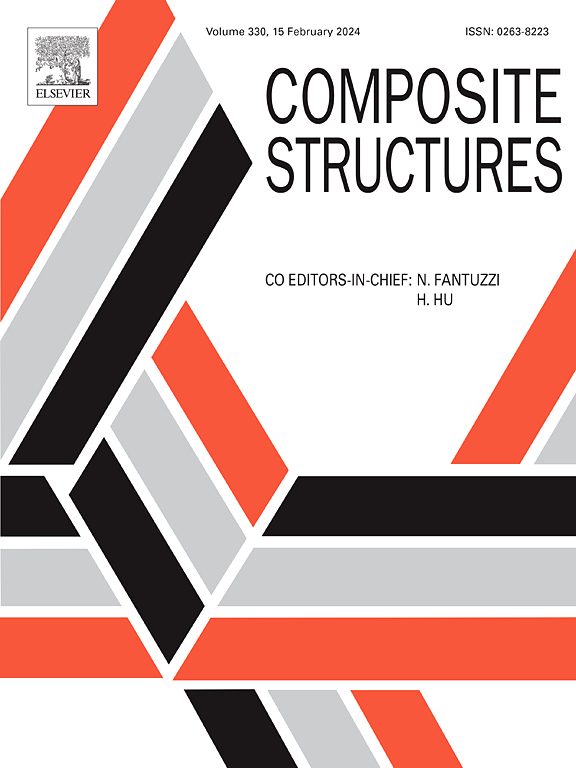Shear behavior in Steel-UHPFRC composite beams with different failure modes
IF 6.3
2区 材料科学
Q1 MATERIALS SCIENCE, COMPOSITES
引用次数: 0
Abstract
This paper investigates the shear behavior of a novel steel-UHPFRC composite beam under different failure modes, with emphasis on the distinct roles of each component in resisting shear forces, highlighting their interaction and relative performance. Three composite beams were designed to introduce different failure modes and experimentally tested, their fracture behavior was analyzed using Digital Image Correlation (DIC) techniques to capture strain localization, microcrack initiation and propagation. The beam B1 with failure mode by yielding of steel dowel exhibited high shear-resistance capacity and a ductile fracture process. The beam B2 with failure mode by UHPFRC splitting showed premature failure of UHPFRC at the interaction zone, and B3 with UHPFRC web failure exhibited the weakest performance due to premature failure of UHPFRC web. The shear resistance of each beam was calculated using an analytical method based on the failure mode, which aligned well with the experimental results, providing further validation of the approach. This study emphasizes the need for optimized shear reinforcement in the UHPFRC web and enhanced detailing at the interaction zone to maximize composite action. Additionally, design recommendations for practical application were provided.
求助全文
约1分钟内获得全文
求助全文
来源期刊

Composite Structures
工程技术-材料科学:复合
CiteScore
12.00
自引率
12.70%
发文量
1246
审稿时长
78 days
期刊介绍:
The past few decades have seen outstanding advances in the use of composite materials in structural applications. There can be little doubt that, within engineering circles, composites have revolutionised traditional design concepts and made possible an unparalleled range of new and exciting possibilities as viable materials for construction. Composite Structures, an International Journal, disseminates knowledge between users, manufacturers, designers and researchers involved in structures or structural components manufactured using composite materials.
The journal publishes papers which contribute to knowledge in the use of composite materials in engineering structures. Papers deal with design, research and development studies, experimental investigations, theoretical analysis and fabrication techniques relevant to the application of composites in load-bearing components for assemblies, ranging from individual components such as plates and shells to complete composite structures.
 求助内容:
求助内容: 应助结果提醒方式:
应助结果提醒方式:


